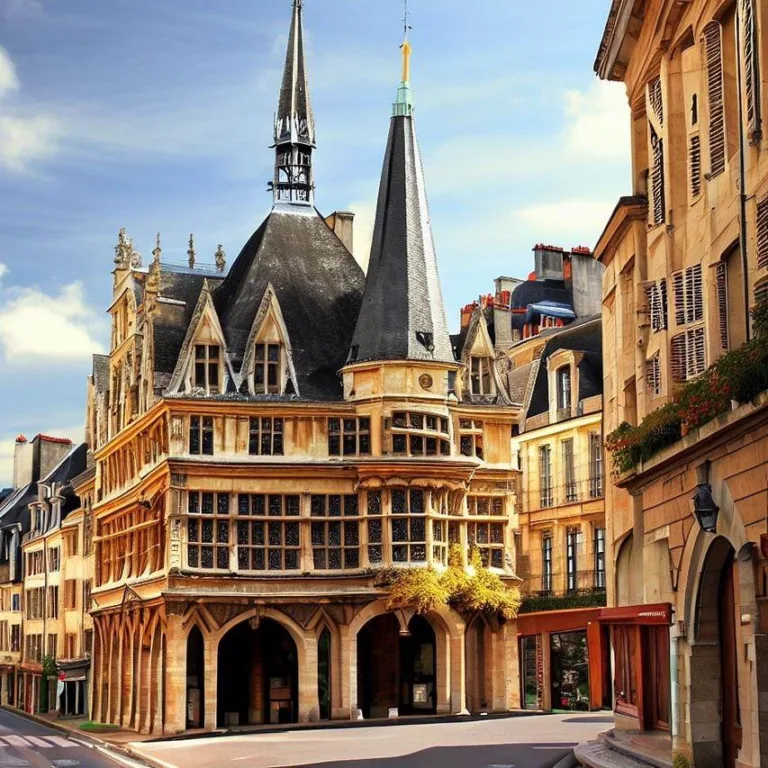Welcome to our comprehensive guide to Dijon, a captivating city steeped in history and renowned for its cultural richness. Nestled in the heart of Burgundy, France, Dijon has charmed visitors for centuries with its medieval architecture, flavorful cuisine, and vibrant atmosphere. In this article, we will delve into the highlights of Dijon, from its captivating history to its culinary wonders, ensuring you’re well-equipped to discover this gem for yourself.
The rich history of dijon
Dijon boasts a storied history that dates back to Roman times. The city’s strategic location made it an important center of trade and commerce, leading to its growth and development throughout the ages. The historic core of Dijon is a treasure trove of architectural marvels, including the Palais des Ducs de Bourgogne, a grand palace that once housed the powerful dukes of Burgundy.
The Renaissance period saw Dijon flourish as a hub of artistic and intellectual innovation. The city’s charming streets are lined with elegant townhouses and stunning cathedrals, showcasing the influence of various architectural styles over the centuries.
Art and culture
Dijon’s cultural scene is as vibrant as its history. The city is home to numerous museums and galleries that showcase an impressive collection of art and artifacts. The Musée des Beaux-Arts, housed in the aforementioned Palais des Ducs, boasts an exceptional collection of European art from the Middle Ages to the 19th century.
The annual International Gastronomy Fair is a testament to Dijon’s deep-rooted appreciation for culinary arts. This event draws food enthusiasts from around the world to indulge in the finest Burgundian delicacies, including the famous Dijon mustard.
Culinary delights
No visit to Dijon is complete without savoring its culinary offerings. The city’s cuisine is a reflection of its rich heritage, blending traditional Burgundian flavors with modern gastronomic trends. Indulge in coq au vin, a classic dish of chicken braised in red wine, or relish escargot prepared with garlic and herbs.
Dijon is synonymous with mustard, and a visit here wouldn’t be complete without a taste of the world-famous Dijon mustard. The traditional recipe, made with locally grown mustard seeds, offers a piquant burst of flavor that elevates any dish.
Exploring the surroundings
While Dijon itself offers a wealth of attractions, the surrounding region is equally enchanting. The Burgundy wine region, just a short drive away, beckons wine aficionados to explore its vineyards and enjoy wine tastings at charming châteaux. The picturesque countryside is ideal for leisurely walks and cycling, providing a serene escape from the hustle and bustle of city life.
Frequently Asked Questions (FAQs)
1. What is Dijon known for?
Dijon is known for its rich history, medieval architecture, vibrant cultural scene, and its world-famous Dijon mustard.
2. How can I explore Dijon’s history?
You can explore Dijon’s history by visiting landmarks such as the Palais des Ducs de Bourgogne and the city’s charming streets adorned with historic buildings.
3. What is Burgundy’s wine region?
The Burgundy wine region is renowned for its exquisite wines. It offers picturesque vineyards, wine tastings, and visits to châteaux where you can learn about the winemaking process.
4. Is Dijon a good destination for food lovers?
Absolutely! Dijon offers a diverse culinary scene with traditional Burgundian dishes and the iconic Dijon mustard, making it a paradise for food enthusiasts.
5. How do I get to Dijon?
Dijon is well-connected by train and road. The city has a train station that serves major routes, and it’s easily accessible by car as well.
Viz také:






